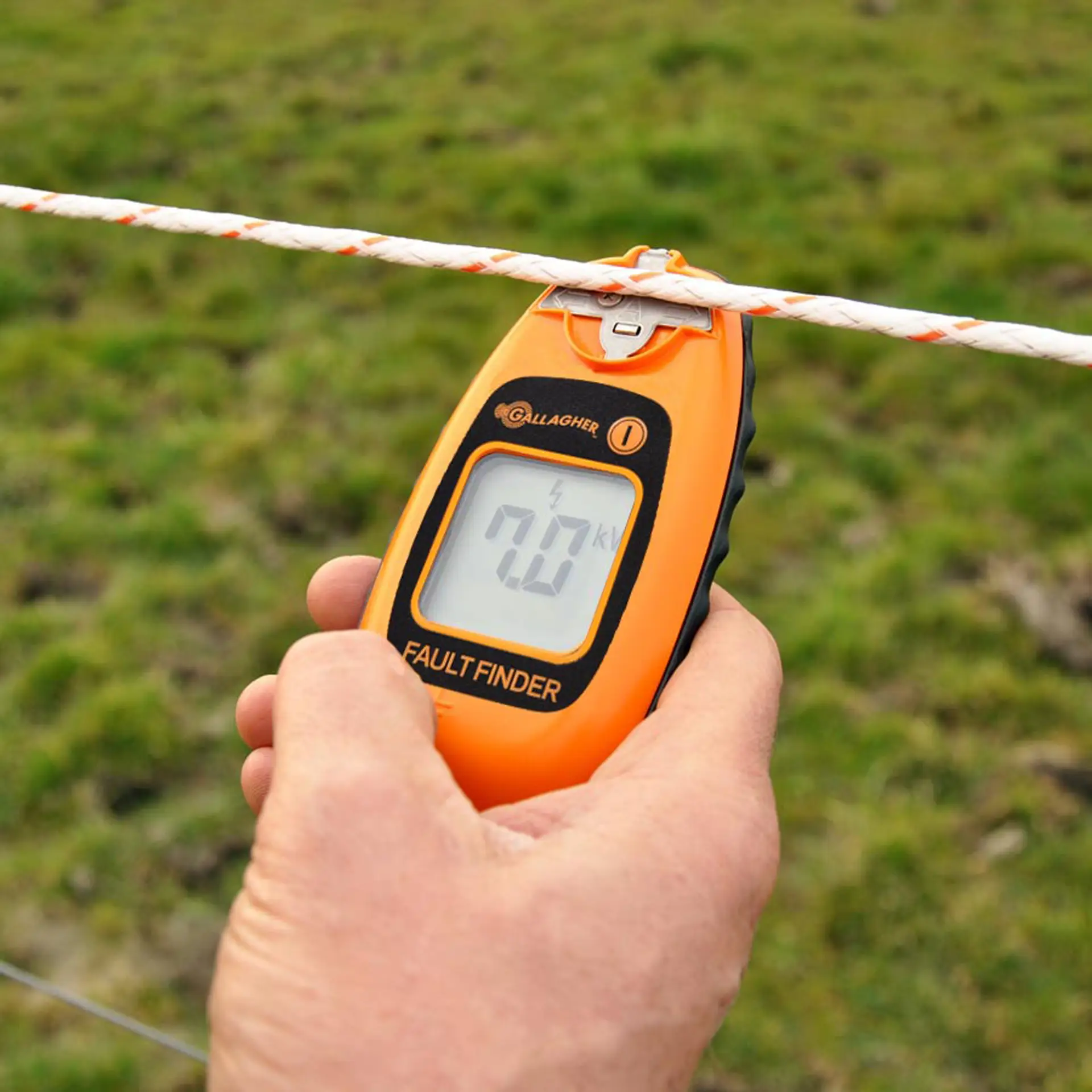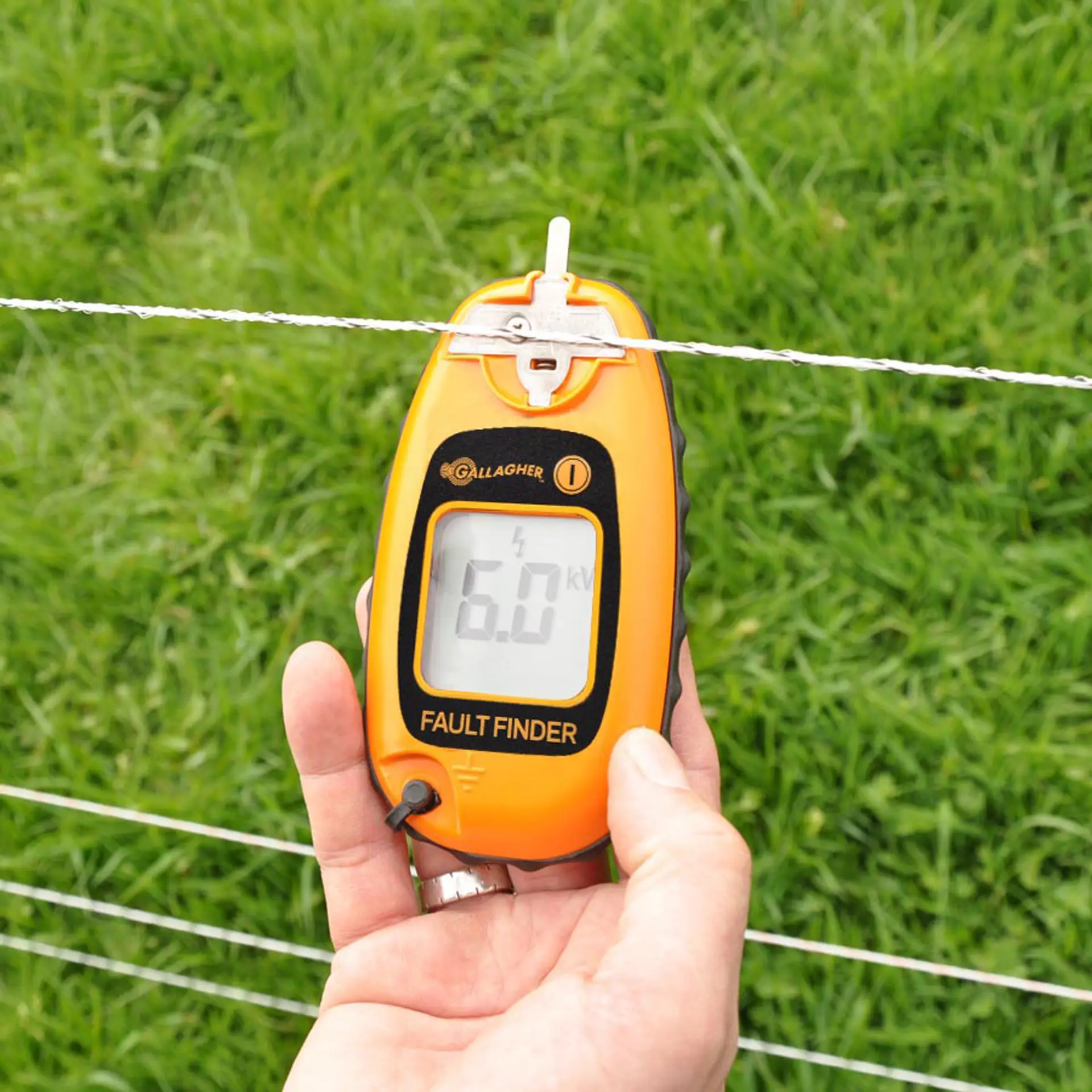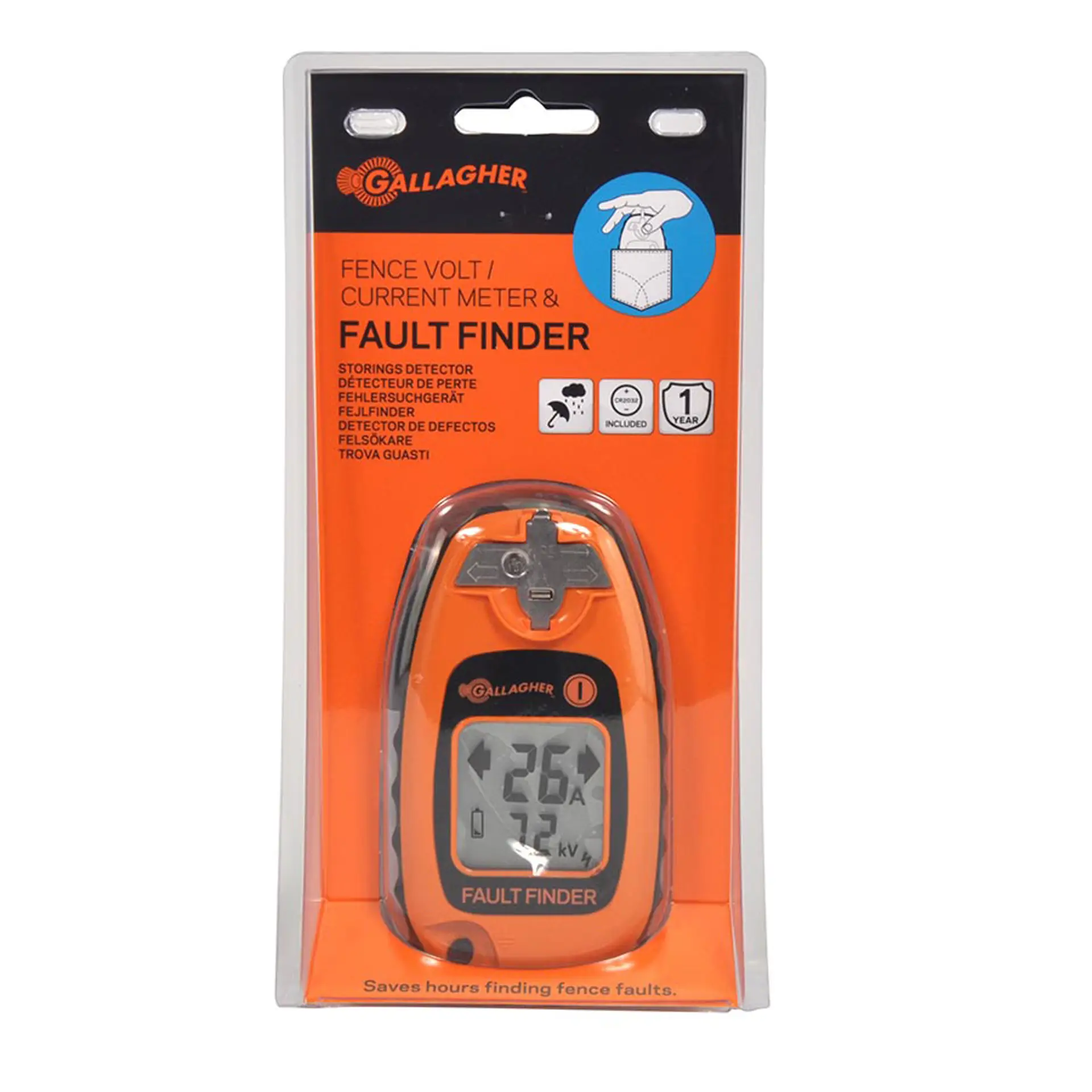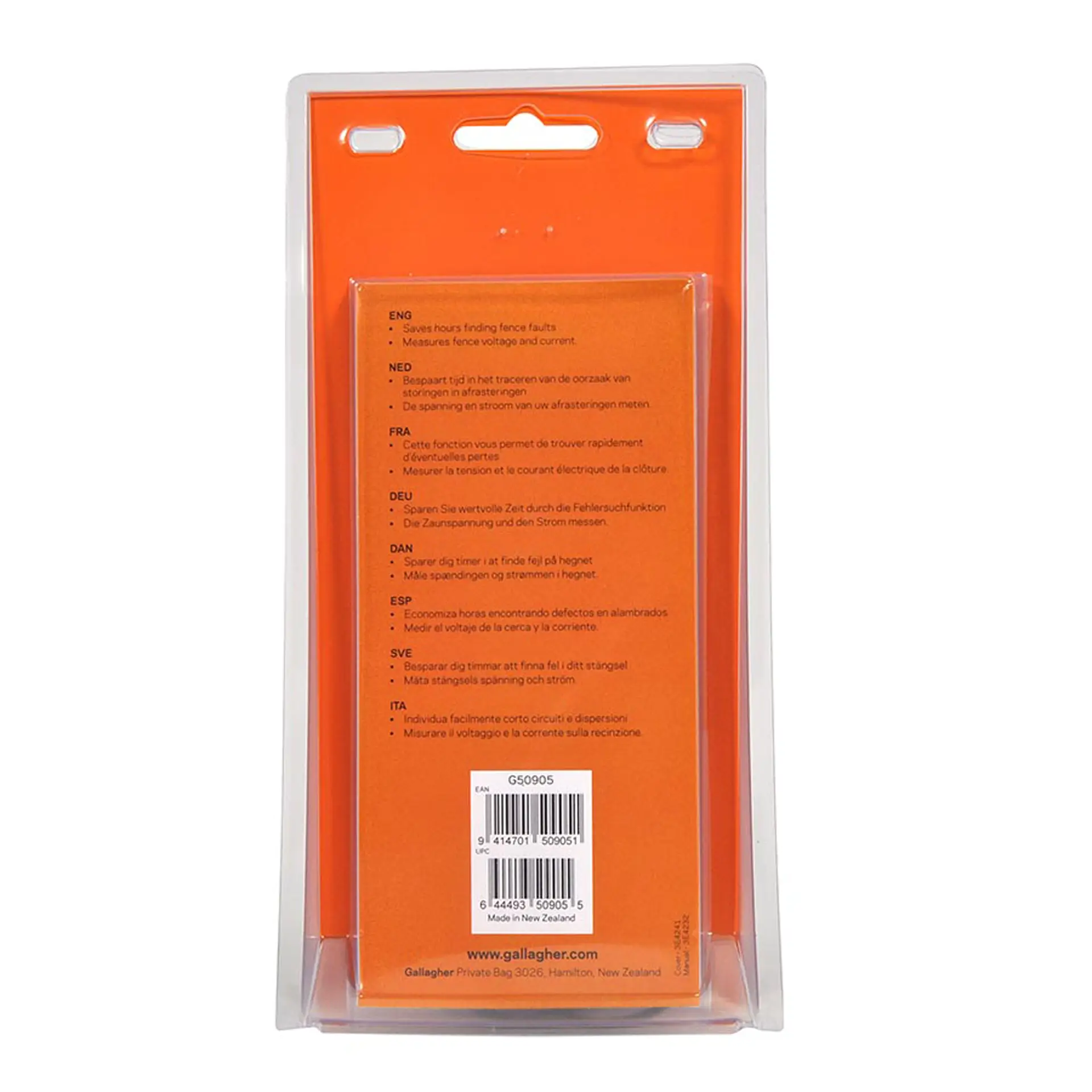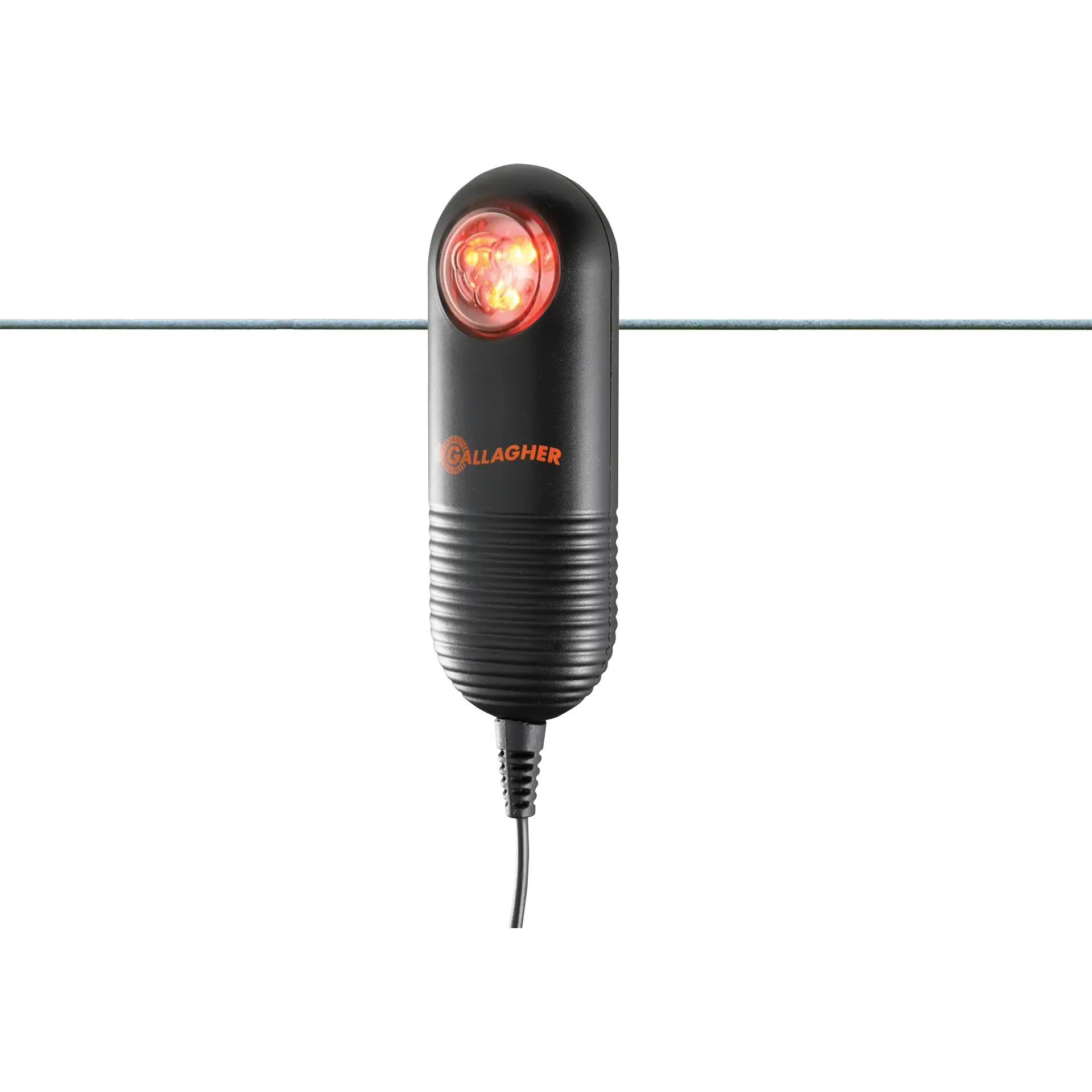Fault Finder
- Measures voltage (0.2-15 kV) and current (1-99 A)
- Displays current direction for quick fault location
- Self-earthing via thumb, no earth stake needed for wire measurements
- Compact, robust and waterproof design
- Suitable for all electric fences
Description
The Gallagher Fault finder, is an advanced measuring instrument with which you can measure both the voltage (0.2 to 15 kV) and the current (1–99 A) of your fence, as well as the energiser and earthing. In addition to measuring voltage and locating faults, the device provides direct insight into the condition of your fence.
Simple measurement without separate earth stake
The device works with a measurement slot and a built-in earthing function. To test the wire, you do not need to use the earth stake: just place your thumb on the grounding pin of the device and you provide the earthing yourself, without risk of a shock. Measure the voltage by placing the wire in the measurement slot. For measuring the earthing or the energiser, you do use the earth stake and the pin (in the measurement slot), which you can easily unfold and place against the energiser or earth stake.
Current arrow points directly to the fault
When detecting faults, the Fault finder indicates the current direction via an arrow on the screen. This current direction always goes towards the fault. You take measurements at intervals of 50 to 100 metres. A sudden drop in current between two measurement points indicates a fault, making it easy to isolate and solve problems. The arrow is only visible in case of larger faults.
Why measuring current is more important than just voltage
What does the current in amperes say about the condition of the fence? And what is a good current? That's difficult to say because every fence has faults, however small. That's why it's important to perform the Gallagher Check annually and check the condition of the fence. Is everything in order, is the voltage sufficient, and do you measure, for example, a current of 7 A? Then that is now your reference. Do you measure a current of 13 A two months later? Then this means there is a new short circuit somewhere, for example, due to a broken insulator or increased vegetation.
It may be that the voltage on the fence remains the same as previous measurements. This is because powerful Gallagher energisers are equipped with adaptive control and automatically deliver more powe at higher loads. Therefore, measuring only the voltage sometimes tells you nothing about the actual state of the fence—only that the device is strong enough to maintain the voltage level.
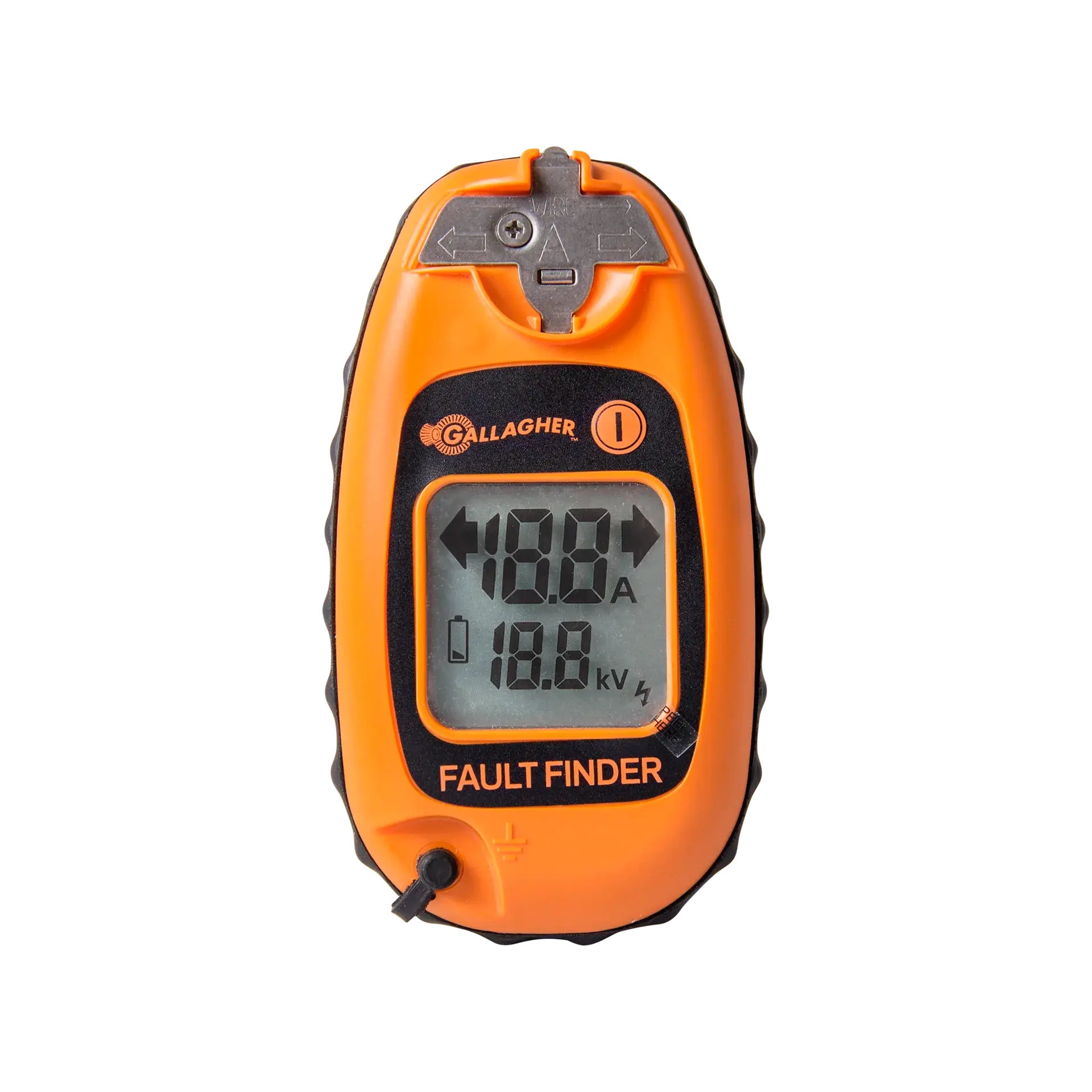
€167.95
Fault Finder
- Measures voltage (0.2-15 kV) and current (1-99 A)
- Displays current direction for quick fault location
- Self-earthing via thumb, no earth stake needed for wire measurements
- Compact, robust and waterproof design
- Suitable for all electric fences
Description
The Gallagher Fault finder, is an advanced measuring instrument with which you can measure both the voltage (0.2 to 15 kV) and the current (1–99 A) of your fence, as well as the energiser and earthing. In addition to measuring voltage and locating faults, the device provides direct insight into the condition of your fence.
Simple measurement without separate earth stake
The device works with a measurement slot and a built-in earthing function. To test the wire, you do not need to use the earth stake: just place your thumb on the grounding pin of the device and you provide the earthing yourself, without risk of a shock. Measure the voltage by placing the wire in the measurement slot. For measuring the earthing or the energiser, you do use the earth stake and the pin (in the measurement slot), which you can easily unfold and place against the energiser or earth stake.
Current arrow points directly to the fault
When detecting faults, the Fault finder indicates the current direction via an arrow on the screen. This current direction always goes towards the fault. You take measurements at intervals of 50 to 100 metres. A sudden drop in current between two measurement points indicates a fault, making it easy to isolate and solve problems. The arrow is only visible in case of larger faults.
Why measuring current is more important than just voltage
What does the current in amperes say about the condition of the fence? And what is a good current? That's difficult to say because every fence has faults, however small. That's why it's important to perform the Gallagher Check annually and check the condition of the fence. Is everything in order, is the voltage sufficient, and do you measure, for example, a current of 7 A? Then that is now your reference. Do you measure a current of 13 A two months later? Then this means there is a new short circuit somewhere, for example, due to a broken insulator or increased vegetation.
It may be that the voltage on the fence remains the same as previous measurements. This is because powerful Gallagher energisers are equipped with adaptive control and automatically deliver more powe at higher loads. Therefore, measuring only the voltage sometimes tells you nothing about the actual state of the fence—only that the device is strong enough to maintain the voltage level.


